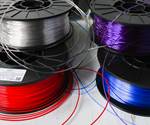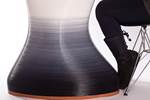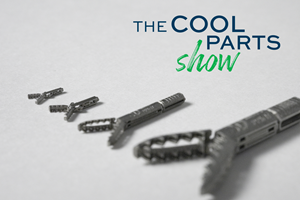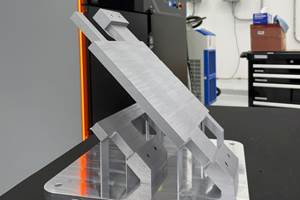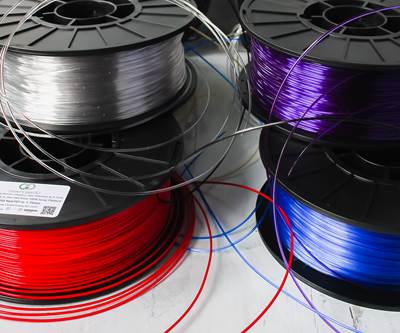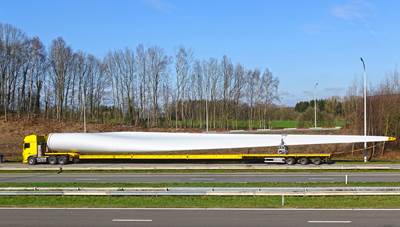Better Material Recapture, Reuse Through 3D Printing (Video #5)
3D printing helps to simplify both manufacturing of a product and material recapture at the end of its usable life. The key is having a plan at the beginning. More in this video, the last in our series on 3D Printing and the Circular Economy.
If you’ve followed our 3D Printing and the Circular Economy series all week, you’ll have learned that additive manufacturing (AM) supports a more sustainable economic model in the following ways: enabling new material options and choices; supporting new design opportunities; providing an efficient, distributed alternative to centralized manufacturing; and building better products. But there’s one final step in the circular economy: end-of-life, or what happens to parts, products and materials at the end of their usable lifespans.
3D printing can play a role here too, by supporting simpler recycling, easing product recapture and reprocessing, and providing new life for recycled materials, just to name a few benefits. The key, however, is planning for the end right at the beginning. Learn more in this video, the final 3D Printing and the Circular Economy installment.
Resources and Related Links
- Videos in this series: What Is the Circular Economy? | Materials | Design | Manufacturing | Product | End-of-Life
- Assembly consolidation for easier recycling
- Product development that includes recapturing products at the end of their lifespans
- Repurposing high-value material for 3D printing
- 3D printing as source of new life and revenue from scrap
Transcript
Welcome to our video series on 3D printing and the circular economy. In this video, we'll talk about end-of-life scenarios. The last stage in closing this loop.
If you think about the linear economy, usually a manufacturer's obligation over their product ends once the product has been sold, or maybe once a warranty has expired. It's completely up to the consumer what they do with the product at the end of its lifespan. Best-case scenario, maybe they sell it or give it away, take it to a recycling center. But more often than not, that product is probably going to end up in a landfill.
Now in the circular economy, remember, our goal is to get from here to here, to take this product and turn it into some kind of material that can feed back into this cycle. And there are a couple of different routes that you can take to get there.
The first would be refurbishing or reusing. So think about returning your used inkjet cartridge or maybe your empty filament spool to the manufacturer. It's possible to take that product and not fundamentally change it, just turn it into something new that can be used again.
The next opportunity would be composting. If you're working with a material like say PLA, it might be possible to have customers return that product to a local composting facility where it can be turned back into its natural elements and in kind of a roundabout way become feedstock again,
A third possibility would be recycling. And I'm not just talking about recycling 3D printed products. There are a lot of companies right now that are figuring out ways to take other kinds of materials and recycle them into feedstock for 3D printing. They're working with all kinds of things, like taking machining chips and turning them into metal powders, or taking plastic bottles, post-industrial waste, and turning it into pellets or filament for 3D printing.
There are a lot of different routes you can take. But the key is to know where you're headed before you begin, in the product development stage. Before you even get to design and manufacturing, you need to know what's going to happen to that product at the end of its lifecycle. That's how we close this loop. That's how we get to a circular economy and a more sustainable future.
If you enjoyed this video series, you can find more about 3D printing, the circular economy and industrial additive manufacturing at AdditiveManufacturing.Media, TheCoolPartsShow.com and gbm.media/CircularAM. Thank you for watching.
Related Content
Preassembled Turbojet Engine, 3D Printed in One Build: The Cool Parts Show #75
Turbojet engines typically consist of hundreds or thousands of parts, but this engine — 2023 winner of The Cool Parts Showcase for Best Proof of Concept — was 3D printed as just two pieces, with the monolithic rotor embedded inside the stationary engine shell.
Read MoreMicro Robot Gripper 3D Printed All at Once, No Assembly Required: The Cool Parts Show #59
Fine control over laser powder bed fusion achieves precise spacing between adjoining moving surfaces. The Cool Parts Show looks at micro 3D printing of metal for moving components made in one piece.
Read MoreWhat Does AM Want? Here Are 4 Aims (Maybe 5) That Additive Manufacturing Is Driving Toward
Certain freedoms and contributing factors allow additive manufacturing to realize its full promise for production.
Read MoreAdditive Manufacturing Versus Cavitation
The design freedom possible with laser powder bed fusion (LPBF) metal 3D printing is making it faster and easier to produce complex anticavitation devices for valves.
Read MoreRead Next
Why “Recycled” Doesn’t Mean Inferior for 3D Printing Filament
GreenGate3D’s PET-G filament is made from recycled plastic, but that doesn’t diminish its quality. How a recycler found a new business opportunity in 3D printing, and how this success might point the way to a more effective recycling ecosystem.
Read MoreThe Challenge of Reclaiming Carbon Fiber for 3D Printing
Carbon fiber composite materials weigh significantly less than steel while offering comparable strength and performance. But recovering and recycling continuous fiber for additive manufacturing applications — without any effect on the mechanical properties — has proven extremely difficult. Here is how Oak Ridge National Laboratory is working to solve the challenge.
Read MoreHow 3D Printing Changes Products in the Circular Economy (Video #4)
3D printing makes possible new and different consumer goods, but also changes the buyer's relationship to those goods. More in this video, part of our series on 3D Printing and the Circular Economy.
Read More
.jpg;width=70;height=70;mode=crop)
